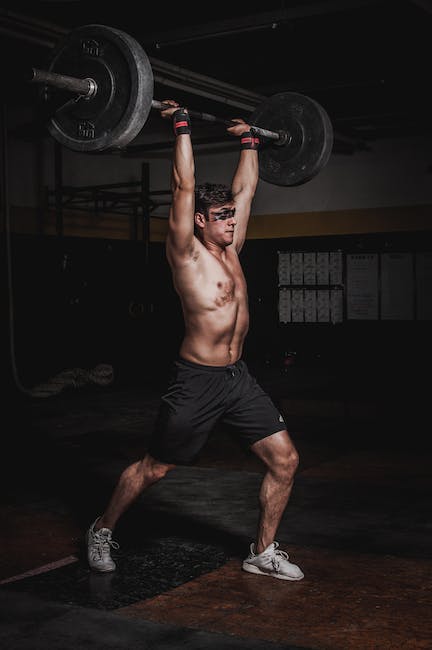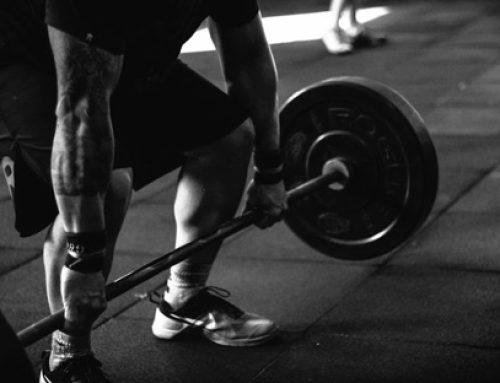Welcome, welcome, to the world of weightlifting with tennis elbow! What’s that you say? It sounds like a punishment fit for a masochist? Oh, but how wrong you are my dear reader. As a weightlifting professional who has suffered from this pesky condition, I can assure you that it’s not all doom and gloom. In fact, it can be quite the humorous experience once you get the hang of it. So, come and join me as we explore the wonderful world of weightlifting with tennis elbow, from a professional perspective.
Contents
- 1 1. Introduction: Understanding Tennis Elbow Injuries In Weightlifting
- 2 2. The Importance of Proper Technique in Weightlifting with Tennis Elbow
- 3 3. Rehabilitating Tennis Elbow Injuries Through Weightlifting
- 4 4. Recommended Exercises for Strengthening and Rehabilitating Tennis Elbow
- 5 5. The Role of Physical Therapy and Professional Guidance in Healing Tennis Elbow Injuries from Weightlifting
- 6 In conclusion… or should we say, lift off!
1. Introduction: Understanding Tennis Elbow Injuries In Weightlifting
If you’ve ever experienced pain in your elbow while lifting weights, you’re not alone. Tennis elbow, also known as lateral epicondylitis, is a common injury that weightlifters and athletes can experience. But fear not, my friends, for understanding this pesky injury is the first step in preventing and treating it.
So, what exactly is tennis elbow? Well, it’s not just an excuse to take a break from lifting. Tennis elbow is a form of tendonitis, which means the tendons in your forearm are irritated and inflamed. The pain is typically on the outside of your elbow and can range from mild discomfort to “oh dear lord, why did I ever pick up a weight in the first place” levels of pain.
Now, you may be thinking, “But I don’t even play tennis!” Well, my friend, neither do I. Despite its misleading name, tennis elbow can be caused by any repetitive motion that involves gripping and twisting your wrist. So, unless you plan on lifting weights without using your hands, it’s important to understand the causes, symptoms, and treatments for this pesky injury. So let’s get started!
2. The Importance of Proper Technique in Weightlifting with Tennis Elbow
Eh, what’s the big deal?
You might think that proper technique in weightlifting is only for those bodybuilders on Instagram who always seem to have a protein shake in hand. But let me tell you, my friend, as someone who has suffered from tennis elbow, it is crucial to use the correct form when lifting weights.
Don’t be a wimp, use your legs!
One mistake people often make in weightlifting is relying too much on their arms to lift the weights. But did you know that your legs are actually the biggest muscle group in your body? That’s right, those things you use to walk and run can actually help you lift heavier weights and put less strain on your elbows. So next time you hit the gym, remember to engage those quads and hamstrings and let your legs do the heavy lifting.
Get your grip under control
Another important factor to consider when weightlifting with tennis elbow is your grip. You want to make sure you have a firm grip on the weights, but not so tight that it puts unnecessary strain on your elbows. Consider using grip aids like lifting straps or chalk to help you maintain a secure grip without over-gripping. And if you’re still struggling, don’t hesitate to ask for help from a trainer – they’re there to help you and keep you safe. After all, no one wants to end up with more than just a tennis elbow named after their favorite sport!
3. Rehabilitating Tennis Elbow Injuries Through Weightlifting
So, you’ve ended up with tennis elbow. Don’t worry, it’s not the end of your tennis-playing days! You can actually help rehabilitate your injury through weightlifting.
First things first, you’ll want to start out with low weights and high reps. This will help strengthen the muscle and tendon without putting too much strain on them. Grab those dumbbells and get lifting!
Next up, focus on exercises that target your forearm muscles. Some great exercises to try include wrist curls, reverse curls, and hammer curls. These will all help improve your grip strength and overall elbow stability. Plus, you’ll feel like a total badass as your bicep gains some definition.
- Low weights, high reps
- Exercises that target forearm muscles: wrist curls, reverse curls, and hammer curls
Lastly, make sure to stretch out those muscles after your weightlifting session. This will help prevent any further injury and loosen up any tightness you may be experiencing. Plus, it’s a great excuse to bust out your best yoga mat and do some downward dogs. Your elbow will thank you!
4. Recommended Exercises for Strengthening and Rehabilitating Tennis Elbow
When it comes to tennis elbow, the road to recovery can be long and arduous. But fear not, my friends, for there are some recommended exercises that will help you get back in the game! Here are just a few tricks of the trade to strengthen and rehabilitate your precious elbow.
First and foremost, it’s important to stretch before engaging in any kind of physical activity. Some of the most beneficial stretches for tennis elbow include the wrist flexor stretch (which involves extending your arm, flexing your wrist, and using your other hand to gently pull your fingers towards your forearm), the wrist extensor stretch (where you hold your arm out, extend your wrist, and use your other hand to apply pressure to your hand), and the triceps stretch (where you hold your arm above your head, bend your elbow, and use your other hand to gently push your elbow towards your head). Trust me, these stretches are the best thing since sliced bread – and who doesn’t love sliced bread?
Next, it’s time to get those muscles working! One great exercise for strengthening and rehabilitating tennis elbow is the dumbbell reverse curl. All you have to do is hold a dumbbell in each hand (or a makeshift weight, like your neighbor’s cat) with your palms facing downwards, and then lift the weights up towards your shoulders. This exercise is especially great for targeting the forearm muscles that are crucial for a powerful backhand and perfect serve – just don’t forget to post your cat back through your neighbor’s window when you’re finished.
Finally, don’t forget to give your elbow some rest and relaxation time. This could involve indulging in some soothing massages (with your spouse’s feet, if they’re brave enough) or even just taking a day to bask in the warm glow of your couch and watch every season of The Office for the tenth time. Trust me, your elbow will thank you for it – and who doesn’t love a good excuse to binge-watch their favorite show?
5. The Role of Physical Therapy and Professional Guidance in Healing Tennis Elbow Injuries from Weightlifting
Physical therapy plays a critical role in healing tennis elbow injuries caused by weightlifting. This type of exercise is notorious for putting a strain on our muscles and joints. However, with proper guidance and consultation with a physical therapist, you can speed up the recovery process from this pesky injury and get back to lifting weights in no time.
A professional physical therapist can help you identify the cause of the injury and create a personalized program that focuses on stretching, flexibility, and strengthening exercises. These exercises can help alleviate the pain and prevent future injuries. With the help of a physical therapist, you can find the right balance between training and rest, ensuring that your body gets enough time to recover from the intense workouts you put it through.
It’s also important to remember that guidance from a professional can help you avoid common mistakes and myths that can exacerbate tennis elbow. For example, if you believe that pushing through the pain will help you get stronger or that ice packs are the best way to treat inflammation, you could be doing more harm than good. A physical therapist can help you separate fact from fiction and develop a customized treatment plan that fits your unique needs. Trust me, your elbow will thank you for it.
In conclusion… or should we say, lift off!
We hope our professional perspective on weightlifting with tennis elbow has left you feeling pumped up and ready to hit the gym. Remember, with the right techniques and precautions, you can still achieve your fitness goals even with a pesky case of tennis elbow.
So go ahead, grab those weights and show them who’s boss! But don’t forget to listen to your body and give it the rest it needs when necessary. After all, a healthy and injury-free body is always the ultimate goal.
Now, if you’ll excuse us, we’re off to hit the gym ourselves. Let’s lift off, shall we?








Leave A Comment